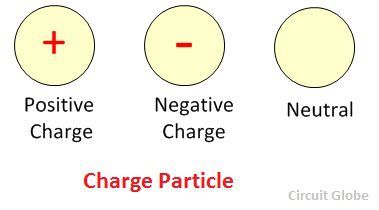The most significant difference between the charge and the current is that the charge is the physical property of matter, whereas the current is the rate of flow of charges. Some other differences between charge and current are explained below in the tabular form.
The electric charge is the physical property of matter which experiences the force when placed in an electric field. It is of three types positive, negative and neutral. When these charges (generally electrons) move in the particular direction its generate current. And this current is used for illumination and mechanical works.
Content: Charge Vs Current
Comparison Chart
| Basis For Comparison | Charge | Current |
|---|---|---|
| Definition | It is a physical property of particles which allow them to interact with each other. | It is the rate of flow of charge particles (generally electrons). |
| Force | Experience force only in electric field. | Experience force both in electrical and magnetic field |
| Unit | Coulombs (C) | Amperes (A) |
Definition of charge
The charge is the fundamental property of particles (ion, atom and molecules) which allows them to attract and repulse with each other when it is placed in an electrical field. The charge on the particles is of three types positive, negative and neutral. The positive charge particle is known as a proton and the negative charge particle is known as the electron. The particle which has an equal number of negative and positive charges is known as the neutrons.
 The charge is measured in coulombs. The one proton has 1.602X10-19 Coulombs of charges and the one electron is equal to -1.602X10-19 Coulombs. The charge particle experience forces when it is placed in an electromagnetic field. The like charge particle repulses each other and the opposite charge particle attracts each other.
The charge is measured in coulombs. The one proton has 1.602X10-19 Coulombs of charges and the one electron is equal to -1.602X10-19 Coulombs. The charge particle experience forces when it is placed in an electromagnetic field. The like charge particle repulses each other and the opposite charge particle attracts each other.
Definition of Current
The flow of electrons is known as the current. It is a physical quantity which is measured and expressed mathematically. The conducting material has a large number of free electrons. When the voltage or emf is applied across the free electron, it starts moving and induces the current.
 The electric current is of two type i.e., the AC and DC. In alternating current, the charges move in both the direction. And in direct current, it is moved only in one direction.
The electric current is of two type i.e., the AC and DC. In alternating current, the charges move in both the direction. And in direct current, it is moved only in one direction.
Key Differences Between Charge and Current
The following are the key differences of charge and current.
- The charge is the property of matter because of which the matter experiences the force of attraction or repulsion in an electric field. Whereas the current is the rate of flow of charged particles called electrons.
- The charge experiences the force only in the electrical field, whereas the current experience the force both in the electric and magnetic field.
- The coulomb is the unit of electric charges, whereas the current is measured in the amperes.
Conclusion
The current and charge both are interrelated to each other. The static particle has charge and the movement of charges is known as the current.

thanks
This is really helpful. Thanks a lot.
this is very useful information for beginners…..thank u
Very beautifully explained
Thank you
awesome explanation. Thank u
thanks
Well structured, easily understandable, really find it helpful, going through it with boy revision!!
Thanks